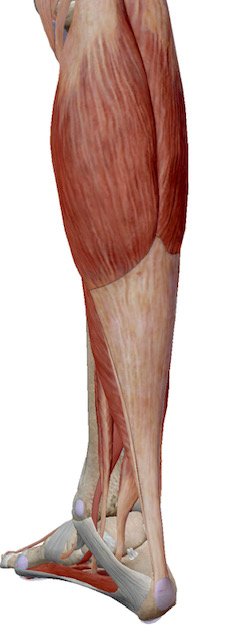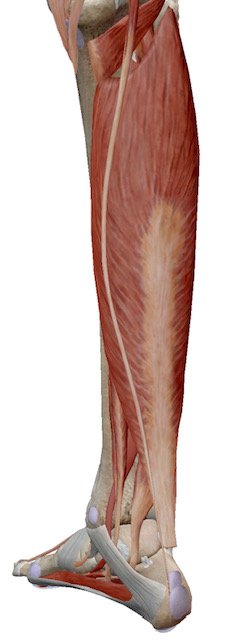Calf Tears - What to Know
You’re playing soccer with your friends when you plant your foot to change direction. As you push off you suddenly feel a sharp pain like you’ve just been stung by a wasp. You brush it off and try to keep going but your calf is tightening up and getting more painful by the minute. You’ve just suffered a torn calf muscle, but how much do you know about this extremely common injury? Who should you see and what steps should you take to get back to sport as quickly as possible? In today’s blog post we will attempt to answer some of those questions for you!
What is it - Anatomy
The calf muscle (also known as the gastrocnemius) is formed by two separate heads, a medial head (inside of the calf) and a lateral head (outside of the calf). These heads feed into the achilles tendon that is shared with the soleus muscle. The calf muscle sits superficial to the soleus muscle and in normal biomechanical movement, it glides and slides over the soleus when we move our knee and ankle. The pictures below show the leg with the calf muscle (left) and without (right) to illustrate the anatomy of the posterior lower leg.
When a calf tear occurs it most frequently occurs at the medial or inside head of the calf muscle. Some studies suggest this is due to more muscle activity at the medial head compared to the lateral head. The tear also commonly occurs where the muscle belly of the calf starts to feed into the achilles tendon. This injury is frequently referred to as Tennis Leg due to first being described in the literature in a tennis player in 1883. It is an incredibly common sporting injury (in some sports, more common even than ankle sprains).
How is it diagnosed?
A physical exam and history will show that there is usually a sharp stinging sensation felt at the time of the tear (but not always). Bruising, swelling, and tenderness may occur at the site of injury and depending on the severity of the tear, function may also be reduced. Diagnostic ultrasound is the preferred imaging modality of choice due to the superficial nature of this injury and the convenience and cost compared to MRI. MRI is still the gold standard with nearly all soft-tissue injuries and is certainly also a viable option to grade and diagnose a medial head gastrocnemius tear.
How is it treated?
Conservative treatment is the first line of defense and in the early stages of treatment, the main goal is to reduce swelling and pain. Depending on the size and severity of the tear, a hematoma may develop. It is important to ensure that this is not compressing any blood vessels or nerves, but typically it is recommended that the hematoma be drained so that normal function of the gastrocnemius and soleus can return as quickly as possible. During the acute phase of injury, it is not recommended to heat the injured area or apply manual therapy so as not to cause further bleeding.
Once the acute phase has passed, strategies to increase the rate of healing in the tissue can be undertaken as well as rehabilitation to strengthen the fibers. It is also important to begin this phase as quickly as possible to reduce the potential for scarring or fibrosis of the injury. Extra Corporeal Shockwave Therapy (ESWT) as well as Class IV laser are both modalities used in our office that accelerate tissue healing, decrease pain, and increase function. Guided one on one progressive rehabilitation is also important to progress the athlete into activities that prepare them for returning to their sport/exercise/activity.
How long will this take?
There is a large variability in return to play with medial head calf tears. Dr. Carles Pedret, a sports medicine physician in Spain, has classified this injury into 4 different subtypes. The length of return to play can be as quickly as 5-7 days and as long as 90-120 days. Each sub-type of tear presents with its own characteristics and complications that contribute to a shorter or longer return to play. Ultrasound imaging can be very useful in determining the sub-type so a more accurate return to play time-line can be put into action and risk of re-injury lessened by not rushing back an athlete who isn’t ready.
If you or anyone you know has suffered this injury, please do not hesitate to reach out to us about how we can help get you back on the field. It is important to see a qualified doctor who can help manage your care and know when to refer for more aggressive therapies should conservative treatments fail.



